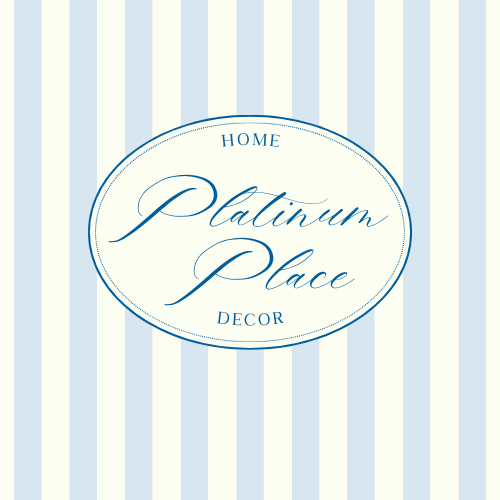The Timeless Charm of Ginger Jars: Styles and Rising Popularity in Home Decor
GENERAL
Kelley Busbice
8/25/20254 min read


The Timeless Charm of Ginger Jars: Styles and Rising Popularity in Home Decor
In the world of interior design, few pieces blend history, elegance, and versatility quite like the ginger jar. These iconic porcelain vessels, with their rounded bodies, narrow necks, and domed lids, have transitioned from functional storage items in ancient China to must-have accents in modern homes. Whether you're a fan of classic blue-and-white motifs or bold contemporary twists, ginger jars offer endless styling possibilities. In this blog, we'll explore the diverse styles of ginger jars and delve into why they're surging in popularity as home decor accessories, especially in 2025's eclectic design landscape.
A Brief History of Ginger Jars
To appreciate ginger jars fully, it's essential to understand their origins. These jars trace back to China's Qin Dynasty (221 BCE–207 BCE), where they were initially crafted as practical containers for storing spices like salt, oil, and, of course, ginger. During the Tang Dynasty (618–907 AD), their production refined, but it was in the Ming Dynasty (1368–1644) that they gained prominence for export to the West. Packed with ginger for trade, they earned their Western name, though in China, they were simply known as "guan" or jars.
By the 19th century, as global trade flourished, ginger jars evolved from utilitarian objects into decorative treasures. European collectors prized them for their intricate porcelain work, often featuring hand-painted scenes inspired by nature, mythology, or daily life. Today, antique ginger jars from these eras can fetch high prices at auctions, symbolizing cultural exchange and craftsmanship. This rich heritage adds a layer of storytelling to any space, making them more than mere decor—they're conversation starters.
Exploring the Different Styles of Ginger Jars
Ginger jars come in a variety of styles, catering to diverse tastes and interior themes. Traditionally, they're characterized by a wide-shouldered, rounded shape with a small mouth and a fitted lid, but modern interpretations have expanded the category.
Classic Blue-and-White Chinoiserie: The most iconic style, these jars feature cobalt blue designs on white porcelain, often depicting floral patterns, landscapes, birds, or figures from Chinese folklore. Originating from Ming-era techniques, they evoke a sense of timeless sophistication and are perfect for traditional or coastal decor. Think of them as the "little black dress" of vases—elegant and adaptable.
Temple Jars: A close relative, temple jars differ with their elongated, fishtail-like base and ornate lid finials, sometimes resembling pagodas or mythical creatures. They're larger and more dramatic, ideal for statement pieces on mantels or entryways. While ginger jars are rounder and more compact, temple jars add vertical interest.
Colorful and Patterned Variations: Beyond blue and white, ginger jars now shine in vibrant hues. Soft pinks, reds, or greens with cherry blossom or wisteria motifs bring a feminine, playful vibe. Brushstroke designs offer an artistic, handcrafted feel, while striped or monogrammed versions personalize spaces. Gold-accented white jars provide a luxurious, modern edge, blending seamlessly with metallic trends.
Modern and Minimalist Designs: Contemporary ginger jars strip away intricate patterns for solid colors, color blocks, or abstract geometrics. These suit minimalist or Scandinavian styles, where simplicity reigns. Some are even repurposed as lamps, combining functionality with decor. Materials have diversified too—while porcelain remains king, ceramic and glass versions offer affordable alternatives.
Antique and Themed Styles: For collectors, antique jars from the Qing Dynasty might feature imperial motifs or rare glazes. Themed options include those with animal symbols (like dragons for power) or seasonal florals, allowing for curated collections that reflect personal stories.
This diversity ensures ginger jars fit any aesthetic, from bohemian eclecticism to sleek urban chic.
Why Ginger Jars Are Becoming More Popular in Home Decor
In recent years, ginger jars have experienced a renaissance, popping up in influencer feeds, design magazines, and retail giants like Wayfair and Amazon. Several factors fuel this surge.
First, their versatility is unmatched. Ginger jars transcend trends, working in farmhouse kitchens as utensil holders, modern living rooms as bookshelf accents, or even bathrooms for cotton swabs. They add height and texture to vignettes, create symmetry in pairs, or serve as floral vases for dramatic arrangements. As homes embrace "grandmillennial" style—a mix of vintage and youthful elements—ginger jars provide that nostalgic yet fresh appeal.
Social media plays a huge role. Platforms like Pinterest and Instagram showcase endless styling ideas, from clustered collections to seasonal swaps. In 2025, with remote work lingering, people invest more in cozy, personalized spaces, and ginger jars offer affordable luxury—replicas start at $20, while antiques add investment value.
Sustainability is another driver. As eco-conscious consumers favor timeless over trendy, antique ginger jars promote reuse, reducing fast-fashion decor waste. Their cultural significance aligns with a growing appreciation for global artisanry, especially amid renewed interest in Asian-inspired designs post-pandemic.
Finally, ginger jars evoke emotion. They symbolize prosperity and harmony in Chinese culture, bringing positive energy to homes. In a fast-paced world, their enduring presence offers comfort and stability.
Styling Tips and Final Thoughts
To incorporate ginger jars, start small: Place one on a coffee table with books and candles for instant polish. For impact, group varying sizes and styles on a console. Fill with faux stems or leave empty—their form is art enough.
In conclusion, ginger jars' evolution from ancient spice holders to modern decor staples highlights their adaptability and charm. With styles ranging from traditional chinoiserie to bold contemporaries, and popularity driven by versatility, social influence, and sustainability, they're here to stay. If you're refreshing your space, consider adding a ginger jar—it's a small investment with big style returns. What will be your favorite way to style them?
Trends
Explore luxury home decor trends and guides.
info@platinumplacehomedecor.com
© 2025. All rights reserved.


